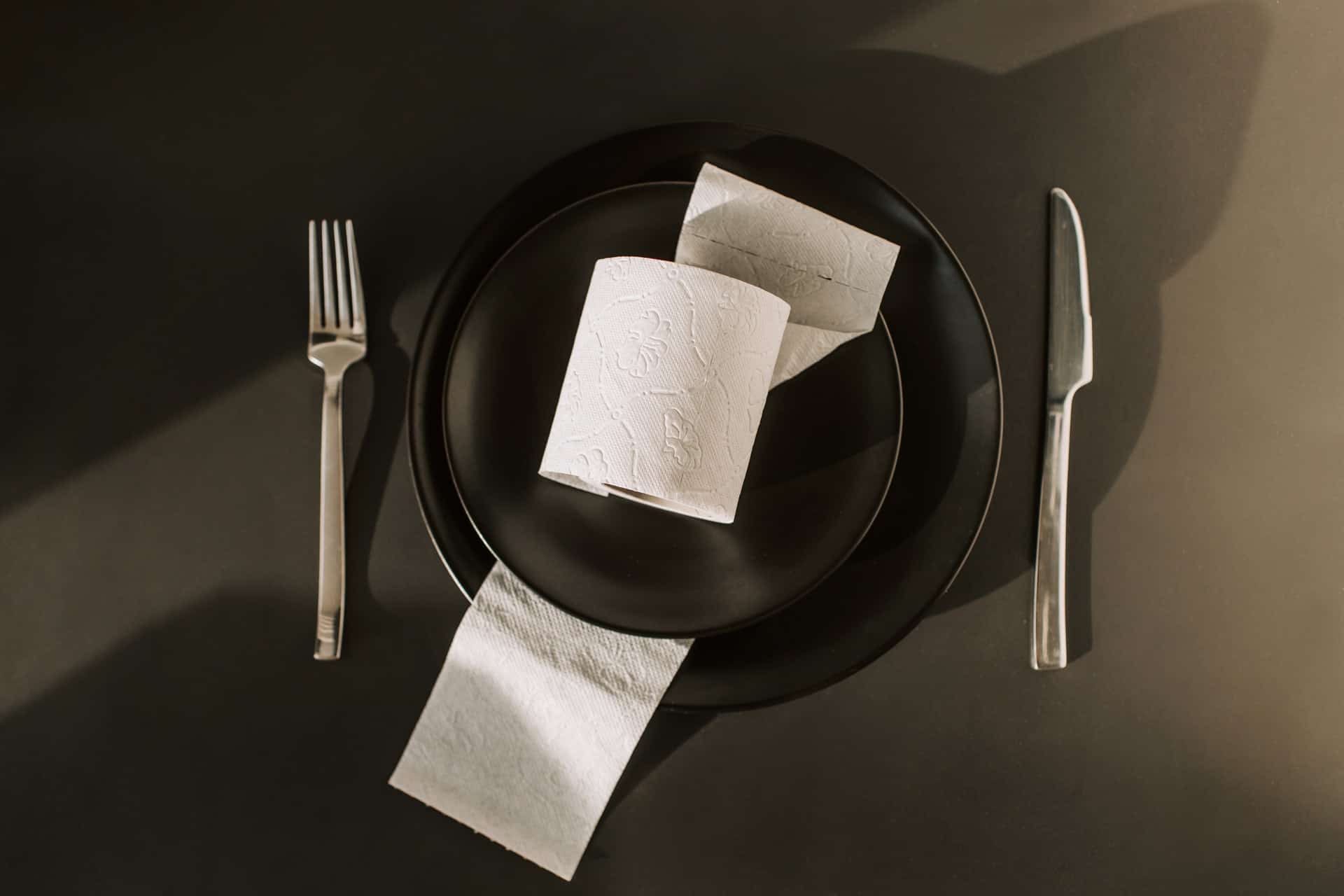When shopping for toiletries, you might think about the effect of these items on the environment.
With statistics like these at hand, it’s no surprise that consumers are asking more questions about where our tissue paper comes from, the process to make it, and how it affects the environment.
- Is Tissue Paper Biodegradable?
- What Is Biodegradable Tissue Paper?
- Why Should We Use Biodegradable Tissue Paper?
- Is Tissue Paper Compostable?
- How long does tissue paper take to decompose?
- What makes tissue paper biodegradable?
- Can tissue paper go in compost?
- Is Tissue Paper Recyclable?
- Is Tissue Paper Eco-Friendly?
- Are tissue papers bad for the environment?
- To Sum it Up
Is Tissue Paper Biodegradable?
While all tissue paper is biodegradable, not all tissue papers are created equally or with the same materials.
Biodegradable-labeled tissue paper typically costs more and breaks down more quickly than standard tissue papers.
However, this price difference often leaves customers such as yourself wondering what the fundamental differences are and if this is a green-washing strategy for increasing sales.
But, the process of degradation varies among different tissue papers.
There are tissue papers made from biodegradable materials with no chemicals added, and there are other tissues recycled from used paper bags or cartons.
In contrast, others blend by chemicals or with plastic components.
The difference in production and composition determines how well tissue papers can fit under the biodegradable classification.
Fortunately, we’ve gathered the best information on tissue paper and biodegradable-labeled tissue papers to help you understand what you’re actually paying for.
What Is Biodegradable Tissue Paper?
If all tissue paper is biodegradable, why would a company bother to label its product as biodegradable? It’s actually quite simple.
Tissue papers all break down over time; however, biodegradable-labeled tissue papers break down significantly faster.
Companies make biodegradable tissue paper with the following materials-
- Bamboo
- Hemp
- Kenaf
- Sugar Cane By Product
In contrast, regular tissue papers are made out of these materials-
- Hardwood from trees
- Softwood from trees
The worst part about standard tissue paper is that the wood harvested to produce it is typically virgin forest. At 27,000 trees per day, that is a genuinely unsettling statistic.
Why Should We Use Biodegradable Tissue Paper?
We should all try to use more biodegradable tissue paper and other paper products to decrease our environmental footprint.
Biodegradable tissue paper is superior to standard tissue papers for a variety of reasons.
As we’ve already discussed, using biodegradable tissue papers is much gentler on the environment.
From sourcing and production to the final product elimination, it is a much more eco-friendly option than standard papers.
There are other benefits to using biodegradable tissue papers as an alternative to standard tissue papers too.
For example, if you use biodegradable tissue, you are highly unlikely to experience any issues with blockages or overfilled septic tanks.
Not only does biodegradable tissue break down quickly and effectively, but it also requires fewer resources to undergo the degradation process.
A little bit of water is all that it takes to break down biodegradable papers.
Is Tissue Paper Compostable?
Composting tissue paper is definitely possible.
We recommend, however, that you take serious note of the difference between “clean” tissue papers and “dirty” tissue papers before you even consider adding your tissue paper to your compost pile.
Most composters put their compost to good use in the garden, flower beds, or elsewhere in the yard once it has broken down into soil-enriching humus.
You’ll undoubtedly want to avoid putting bathroom waste paper products in your garden soil.
How long does tissue paper take to decompose?
Tissue papers take between weeks and months or longer to decompose and not as fast as you would have thought.
Biodegradable tissues are made to decompose about four times more quickly than regular tissue papers.
But under normal breakdown conditions, in the presence of heat, water, air, and microorganisms, tissue papers dissolve fast enough and decompose within a short period.
If disposed of wrongly, tissue paper may take years to disintegrate, and different factors can determine how much time it takes for a tissue to decompose.
These factors include how thick the tissue paper is, the conditions it is exposed to at disposal, and the quantity of water available for a breakdown.
What makes tissue paper biodegradable?
A tissue’s major component makes it biodegradable. Tissue paper is biodegradable because its production is from wood.
Just like every other plant-based products are biodegradable, tissues are not left out.
They come from wood pulp/fibers or recycled paper materials, which are sustainable means of production, making the final product a biodegradable one.
It is important to note that because most tissues made from recycled papers are often rough on the skin, they are not as common as soft ply tissues.
Can tissue paper go in compost?
Yes. Tissue paper can go into your compost pile because it can take up water from the mix, increasing its disintegration rate.
Composting used tissue papers is a way of protecting the environment from the litter as it, in turn, enriches the soil after a breakdown.
However, some issues are held together by additives, which means they may not be compostable.
Is Tissue Paper Recyclable?
Technically speaking, yes, tissue paper is recyclable.
This is regardless of whether or not the label says biodegradable.
However, with any product that you are considering recycling, you have to consider whether or not your local facilities are equipped to properly handle and process the material.
The fact that an item is recyclable does not necessarily ensure plausibility.
While we are making many great strides as a society to tackle environmental problems and cut back on the ways we are damaging our planet, the system in place for the local municipal waste management needs time to catch up with legislation and policy.
The equipment needed to clean, process, and capture out-gases that result from recycling practices costs hundreds of thousands of dollars.
Additionally, this equipment is still impossible to procure in many areas due to a lack of availability.
Depending on where you live, your local municipal waste management facility may or may not be able to recycle your tissue paper goods.
Some cities request that residents recycle their tissue paper, while others ask that they compost it.
Is Tissue Paper Eco-Friendly?
Whether or not tissue paper is eco-friendly is a complex question.
Standard tissue papers made with unsustainable sourcing and production methods are contributing a great deal to the deforestation problem our planet is struggling with.
Traditional tissue papers also need more time and more resources, such as water, to fully break down into their most natural elements.
On the other hand, biodegradable tissue papers boast more environmentally friendly sourcing and production methods that require fewer resources to dispose of and break down properly.
Some biodegradable tissue papers are even the by-product of other industries, which cuts down on the waste left behind by products like sugar.
While biodegradable tissue is considerably more eco-friendly than standard tissue paper, not all biodegradable tissues are equal.
Bamboo products, for instance, are not as environmentally friendly as all of the hype implies that they are.
Bamboo requires harsh chemical processing to turn it into textiles, paper goods, and other items pushed as eco-friendly.
When in doubt about a product’s eco-friendliness, don’t be afraid to do some independent research on it!
Are tissue papers bad for the environment?
When you consider the whole process of producing tissues, right from raw material sourcing, we can say the impact of sourcing for woods for tissue production is not suitable for the environment.
It involves cutting down trees from the forest, thus rendering the wildlife homeless.
Only a few tissue paper percentages are produced through renewable processes, and most of the trees cut down in the wild are hardly ever replaced.
Another adverse effect of tissues on the environment is that some tissue brands are held together by additives, which makes it challenging to get them composted.
This doesn’t mean that they won’t decompose but will take a longer time to break down, which could lead to piles or mounds of tissue papers stacked on landfills waiting to breakdown.
To Sum it Up
Like other papers, tissues are biodegradable and, in every way, safe for use.
However, proper waste disposal should also be encouraged to ensure easy degradation of tissues on landfills.



